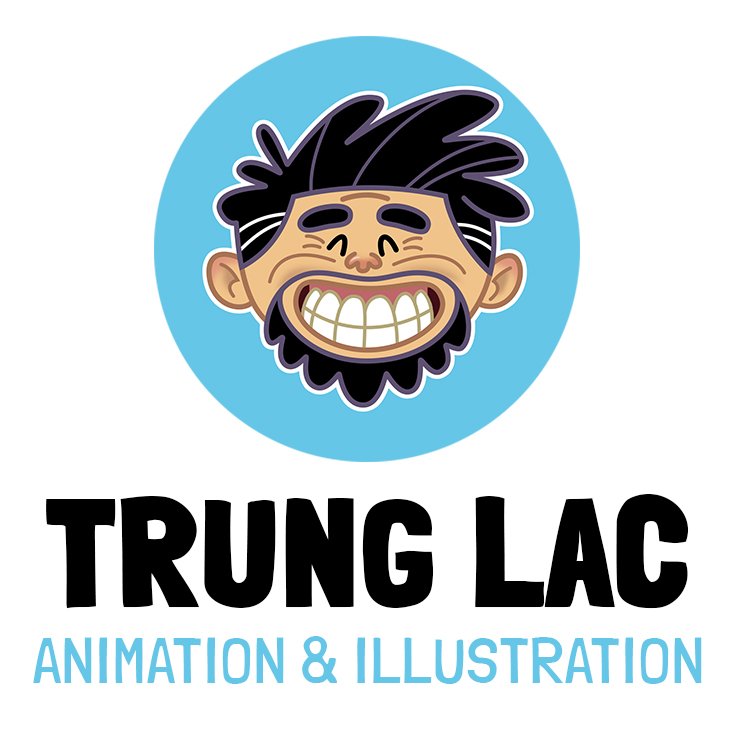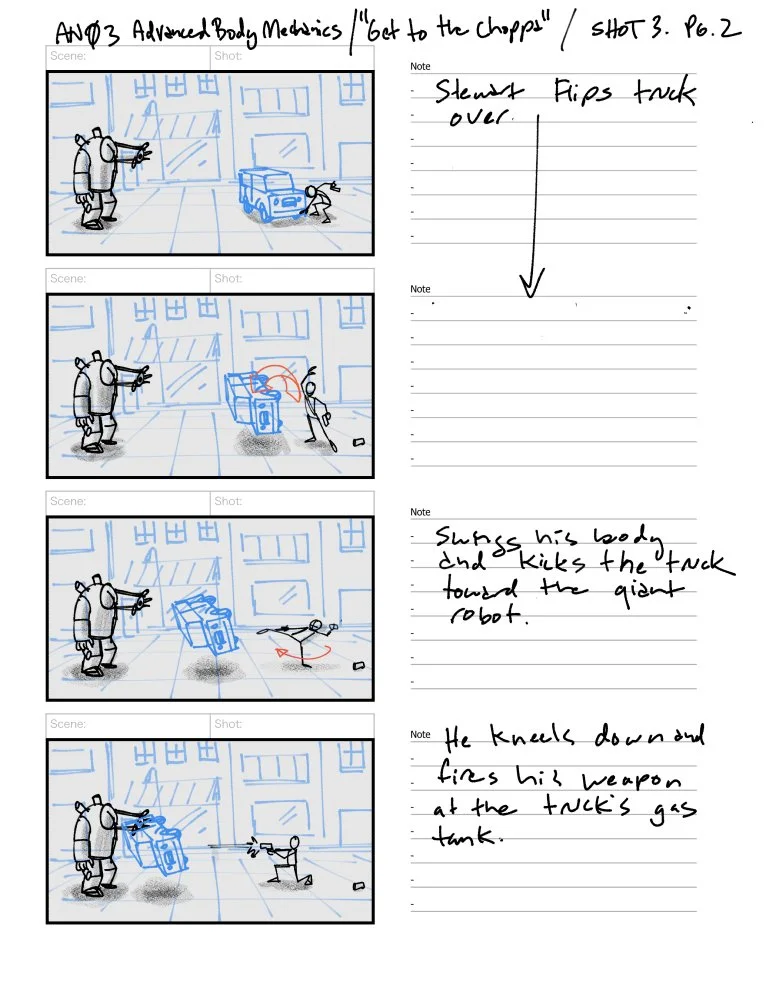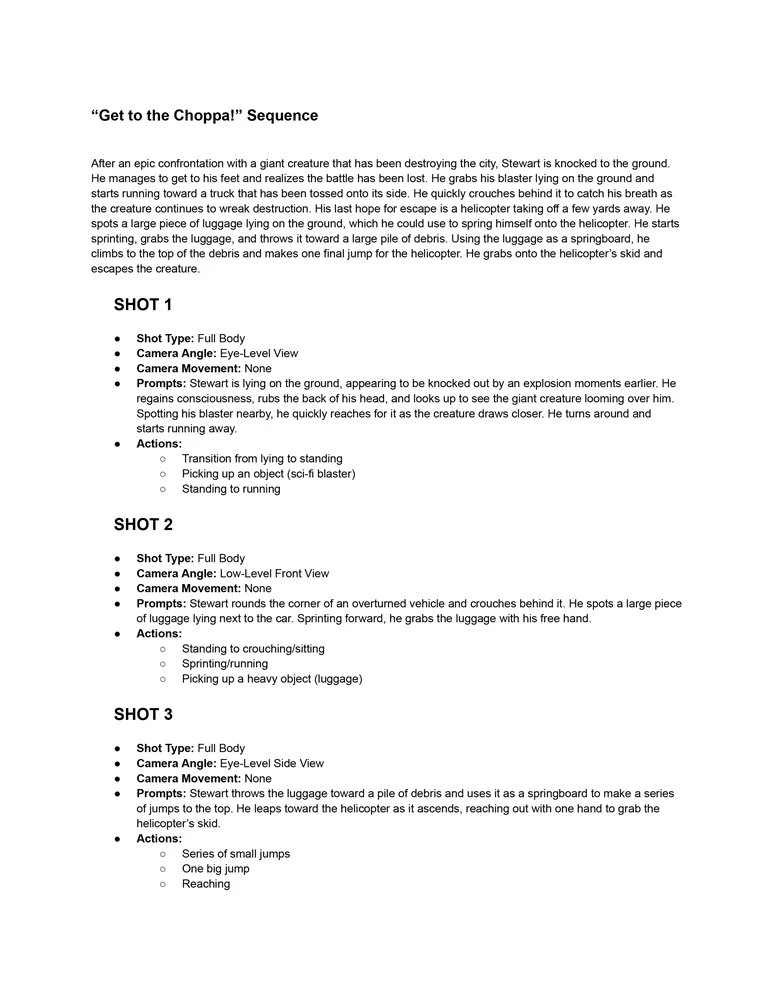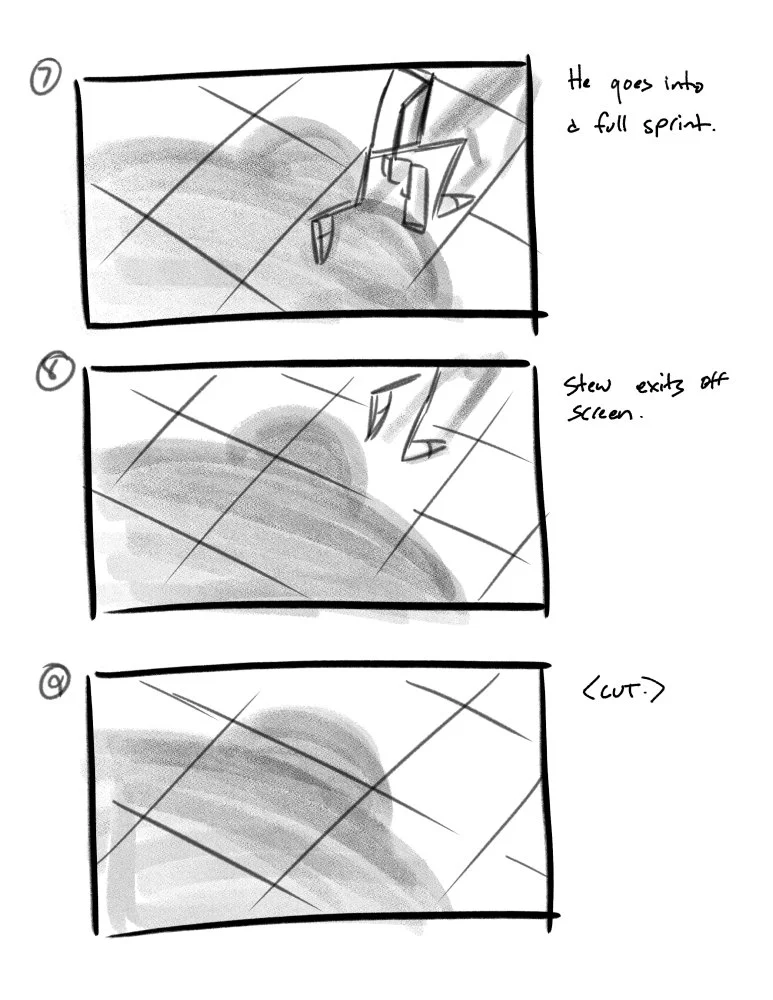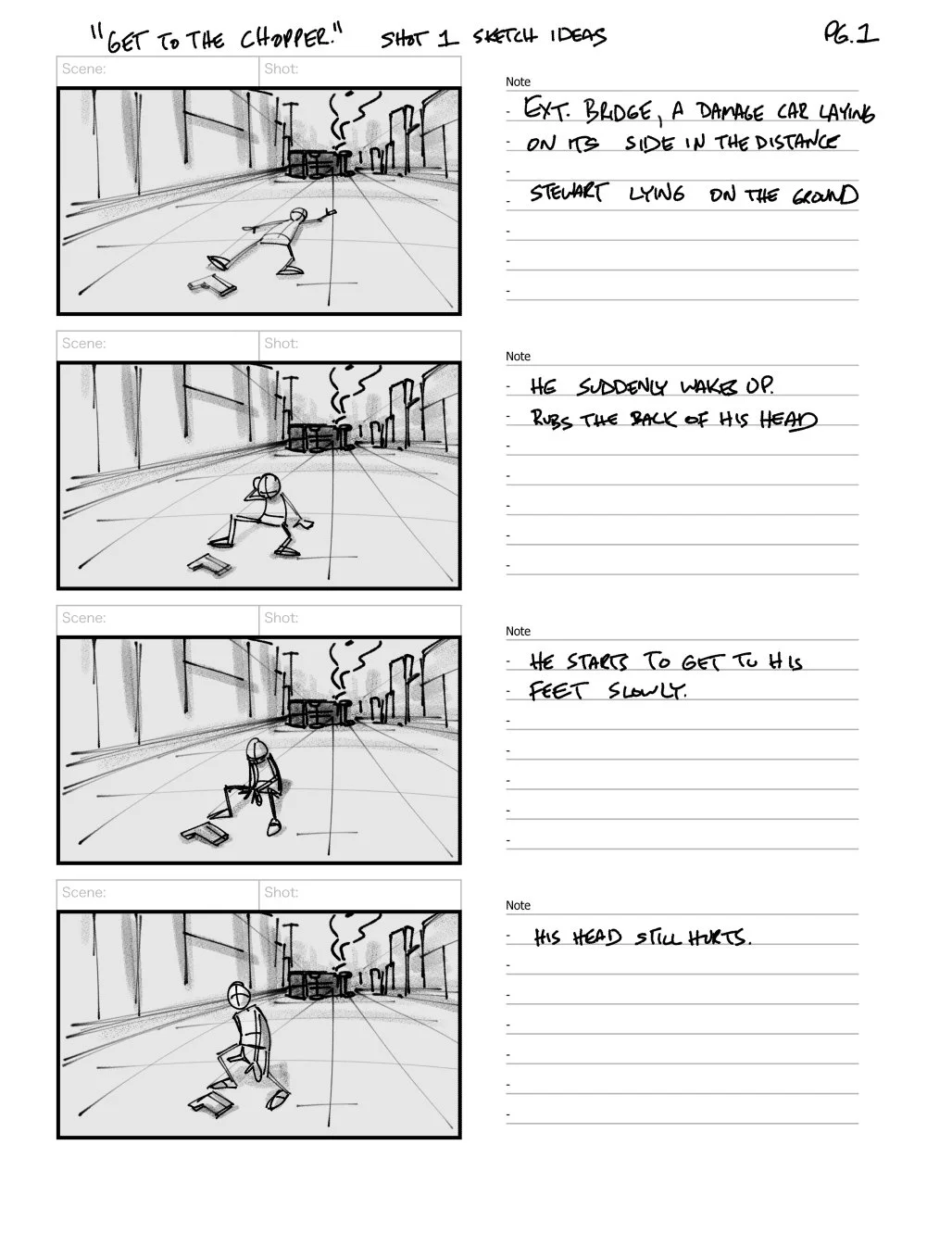Advanced Body Mechanics - Shot 3
In the third and final shot of Advanced Body Mechanics, I wanted the hero to fight back against the villain. My idea was for the character to retrieve a serum or potion from the suitcase that had fallen out of the jeep in the previous shot. Initially, I planned for the hero to use special gloves that granted superpowers, but I opted for a simpler approach that didn’t require additional modeling. The hero then flips the jeep over and executes a jumping back kick, sending it flying toward the villain. Finally, the jeep explodes when the hero shoots the gas tank.
Blocking - The blocking pass for this shot was more challenging than the first two. I decided to animate the arms and legs in IK for the entire shot, which made posing trickier—especially during the spin for the jump kick. Normally, I would animate arms in FK and switch legs to FK when they’re off the ground, as I did in shot 2. However, my mentor mentioned that he prefers animating arms and legs in IK most of the time. I found that approach interesting and wanted to experiment with it myself. It ended up being more challenging than I expected, but in hindsight, that makes sense—my mentor has much more experience with it than I do.
Splining - In this pass, I focused on adding more weight to the truck when Stewart lifts it by adjusting the timing and refining the arm poses. A significant amount of time in this stage was spent fine-tuning the timing, spacing, and posing to ensure the right balance of weight and speed. This was especially important for making the kick feel powerful enough.
Polished - Here, I continued refining the curves and adjusting the spacing of body parts. I realized that some poses, particularly with the torso during the bottle throw and car lift, were a bit too extreme. I’ll need to dial those back for a more natural feel.
Polish Plus - In the final pass, I focused on polishing the animation, refining spacing, and toning down some of the more extreme poses. I also adjusted the jeep animation to enhance its sense of weight. Overall, I’m very pleased with how the shot turned out—though, to be honest, it felt a bit shaky in the early stages. Animating the arms in IK took some time to get used to, but it helped me achieve clean arcs and make subtle adjustments more easily. I’m not sure if I’ll stick with this workflow long-term, but it’s valuable to understand its strengths. I can see it being especially useful in certain situations.
